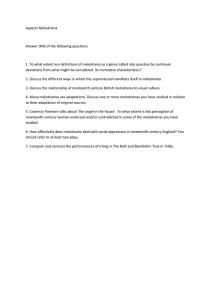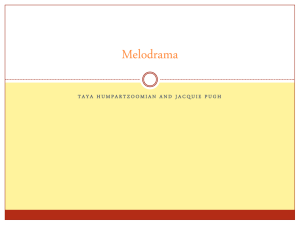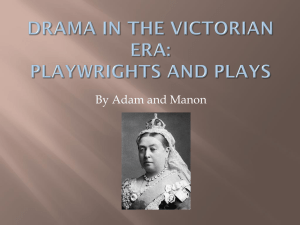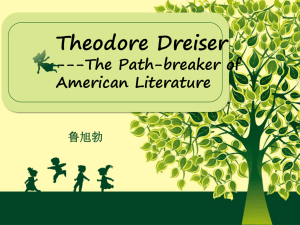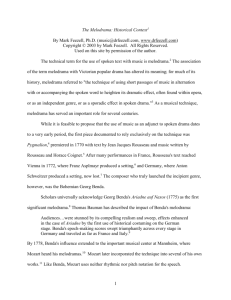Theodore Dreiser`s Sister Carrie is considered by many to be a
advertisement
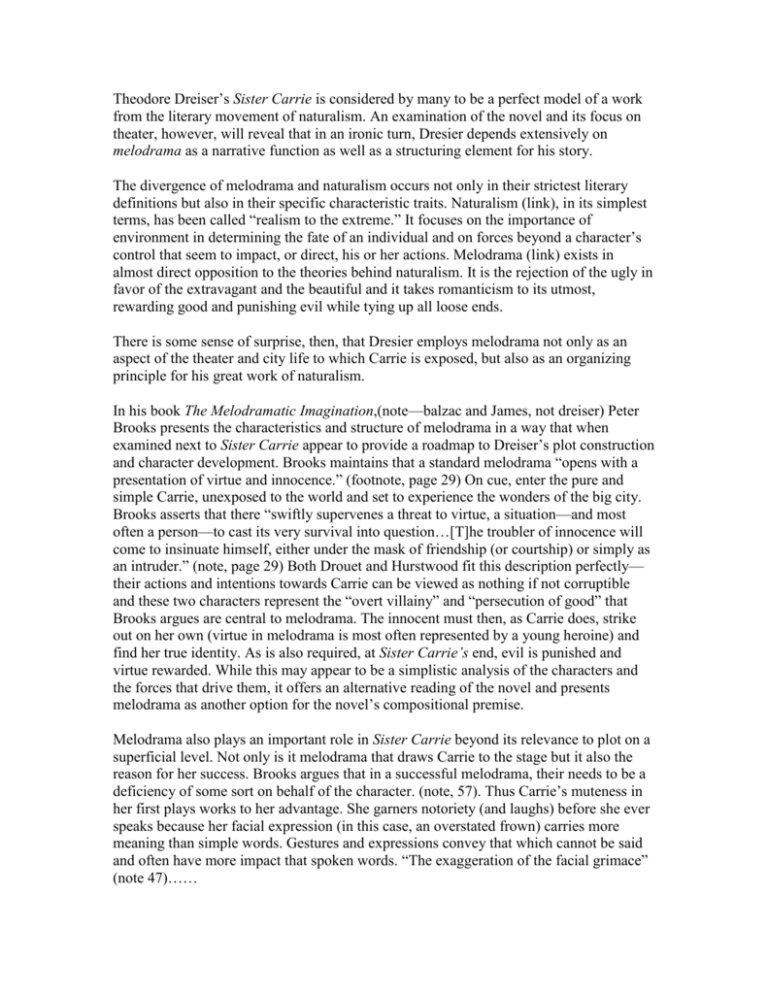
Theodore Dreiser’s Sister Carrie is considered by many to be a perfect model of a work from the literary movement of naturalism. An examination of the novel and its focus on theater, however, will reveal that in an ironic turn, Dresier depends extensively on melodrama as a narrative function as well as a structuring element for his story. The divergence of melodrama and naturalism occurs not only in their strictest literary definitions but also in their specific characteristic traits. Naturalism (link), in its simplest terms, has been called “realism to the extreme.” It focuses on the importance of environment in determining the fate of an individual and on forces beyond a character’s control that seem to impact, or direct, his or her actions. Melodrama (link) exists in almost direct opposition to the theories behind naturalism. It is the rejection of the ugly in favor of the extravagant and the beautiful and it takes romanticism to its utmost, rewarding good and punishing evil while tying up all loose ends. There is some sense of surprise, then, that Dresier employs melodrama not only as an aspect of the theater and city life to which Carrie is exposed, but also as an organizing principle for his great work of naturalism. In his book The Melodramatic Imagination,(note—balzac and James, not dreiser) Peter Brooks presents the characteristics and structure of melodrama in a way that when examined next to Sister Carrie appear to provide a roadmap to Dreiser’s plot construction and character development. Brooks maintains that a standard melodrama “opens with a presentation of virtue and innocence.” (footnote, page 29) On cue, enter the pure and simple Carrie, unexposed to the world and set to experience the wonders of the big city. Brooks asserts that there “swiftly supervenes a threat to virtue, a situation—and most often a person—to cast its very survival into question…[T]he troubler of innocence will come to insinuate himself, either under the mask of friendship (or courtship) or simply as an intruder.” (note, page 29) Both Drouet and Hurstwood fit this description perfectly— their actions and intentions towards Carrie can be viewed as nothing if not corruptible and these two characters represent the “overt villainy” and “persecution of good” that Brooks argues are central to melodrama. The innocent must then, as Carrie does, strike out on her own (virtue in melodrama is most often represented by a young heroine) and find her true identity. As is also required, at Sister Carrie’s end, evil is punished and virtue rewarded. While this may appear to be a simplistic analysis of the characters and the forces that drive them, it offers an alternative reading of the novel and presents melodrama as another option for the novel’s compositional premise. Melodrama also plays an important role in Sister Carrie beyond its relevance to plot on a superficial level. Not only is it melodrama that draws Carrie to the stage but it also the reason for her success. Brooks argues that in a successful melodrama, their needs to be a deficiency of some sort on behalf of the character. (note, 57). Thus Carrie’s muteness in her first plays works to her advantage. She garners notoriety (and laughs) before she ever speaks because her facial expression (in this case, an overstated frown) carries more meaning than simple words. Gestures and expressions convey that which cannot be said and often have more impact that spoken words. “The exaggeration of the facial grimace” (note 47)…… On a third level, the melodramatic is perhaps best embodied by the spectacle and aura of Broadway. Melodramas are based on extravagance, inflated expression and polarizing concepts. The sights, sounds and dress are part of a heightened, hyperbolic drama. Carrie, from her first days in the city, has always been impressed by extravagance, presentation and excessive spending and the fact that these make up the foundation of Broadway is not lost on her. She is not only a participant in this living play, but is a part of the audience, as are the others who while strolling and being seen are spectators themselves. In an Alice in Wonderland progression, people who are going to the theater to watch a melodrama, are participating in a melodrama while watching an actual melodrama on the streets complete with footlights, costumes and performances. On the stage and in the streets, melodrama is sensational, romantic and extravagant; it is based on emotion and presents the extreme and the exaggerated; it takes banal reality, transforms it into excitement and drama that live up to the expectations of the imagination—it is precisely for these reasons that Carrie is drawn to the theater and impressed by the spectacle of Broadway. The paradox is that these things are also what make Carrie unhappy when she concludes that they have no basis in reality and cannot provide the happiness she seeks. The melodrama of Carrie’s life is one of heights and depths—her own and Hurstwood’s—and the middle ground where so many find happiness is obscured by the “blind strivings of [her] human heart.”
